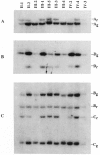Abstract
The molecular nature of three different types of X-linked color-vision defects, protanomaly, deuteranomaly, and protanopia, in a large 3-generation family was determined. In the protanomalous and protanopic males the normal red pigment gene was replaced by a 5' red-3' green fusion gene. The protanomalous male had more red pigment DNA in his fusion gene than did the more severely affected protanopic individual. The deuteranomalous individual had four green pigment genes and one 5' green-3' red fusion gene. These results extend those of Nathans et al., who proposed that most red-green color-vision defects arise as a result of unequal crossing-over between the red and green pigment genes. The various data suggest that differences in severity of color-vision defects associated with fusion genes are caused by differences in crossover sites between the red and green pigment genes. Currently used molecular methodology is not sufficiently sensitive to define these fusion points accurately, and the specific color-vision defect within the deutan or protan class cannot be predicted. The DNA patterns for color-vision genes of female heterozygotes have not previously been described. Patterns of heterozygotes may not be distinguishable from those of normals. However, a definite assignment of the various color pigment gene arrays could be carried out by family study. Two compound heterozygotes for color-vision defects who tested as normal by anomaloscopy were found to carry abnormal fusion genes. In addition, a normal red pigment gene was present on one chromosome and at least one normal green pigment gene was present on the other.(ABSTRACT TRUNCATED AT 250 WORDS)
Full text
PDF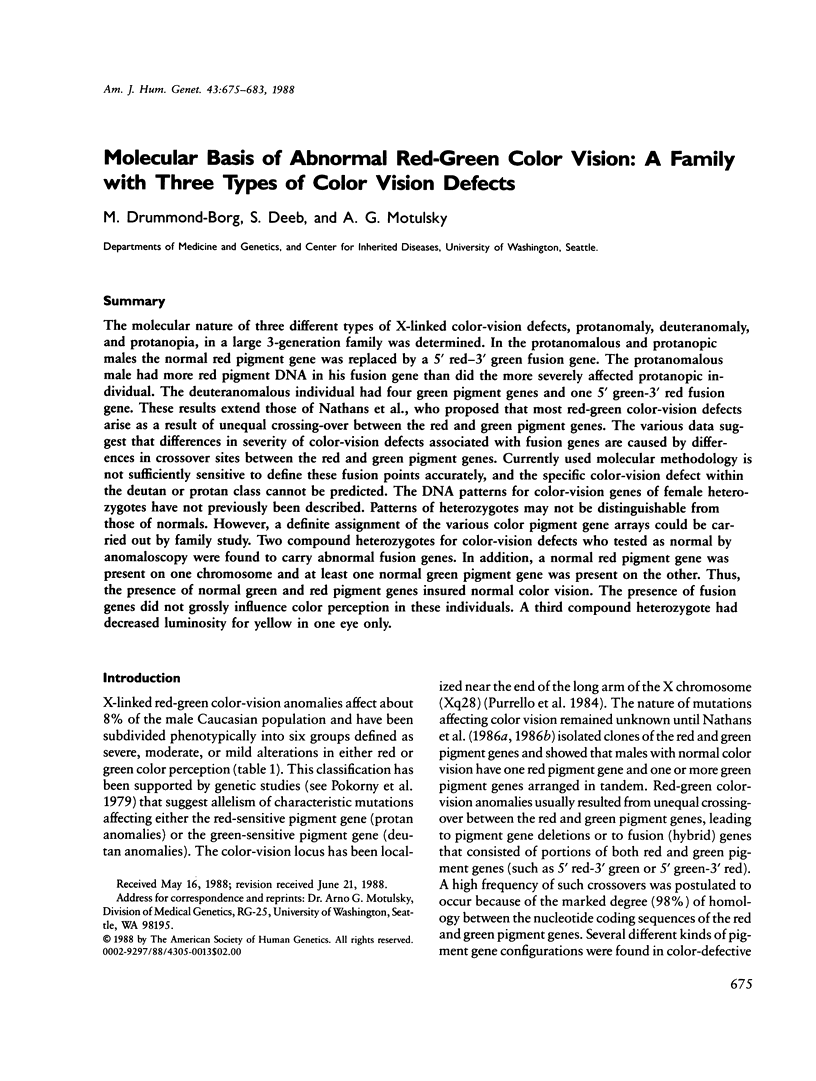
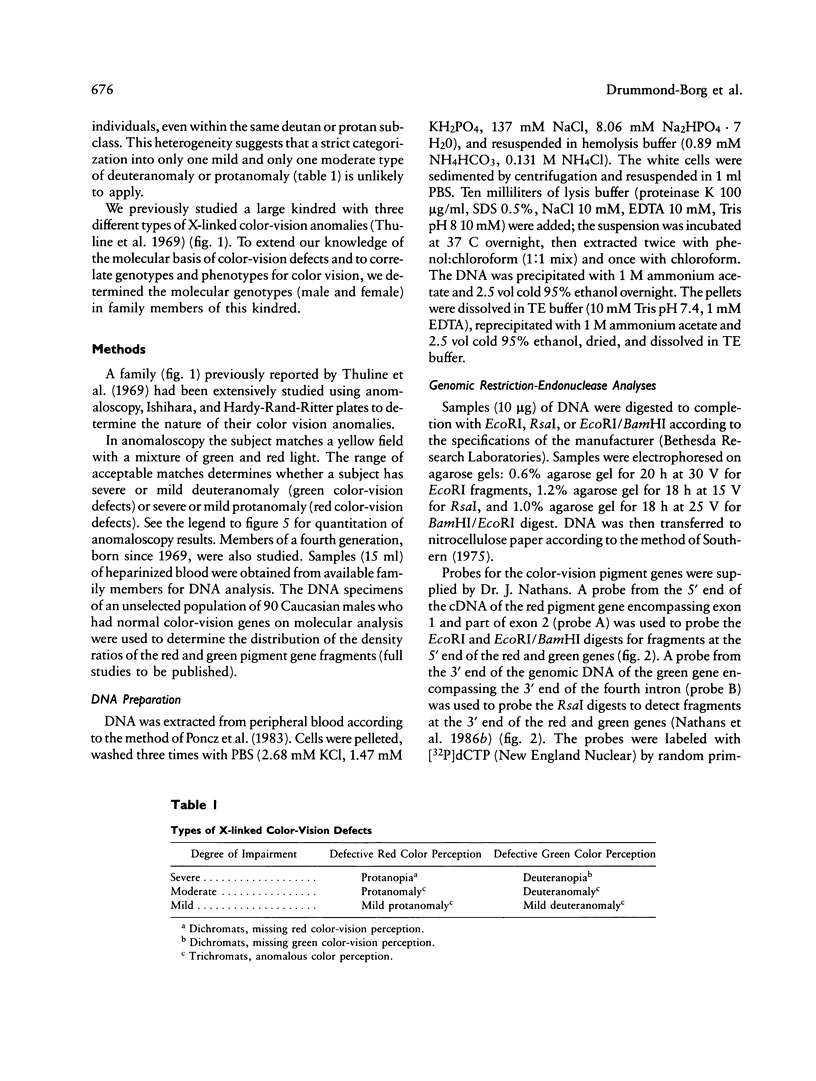
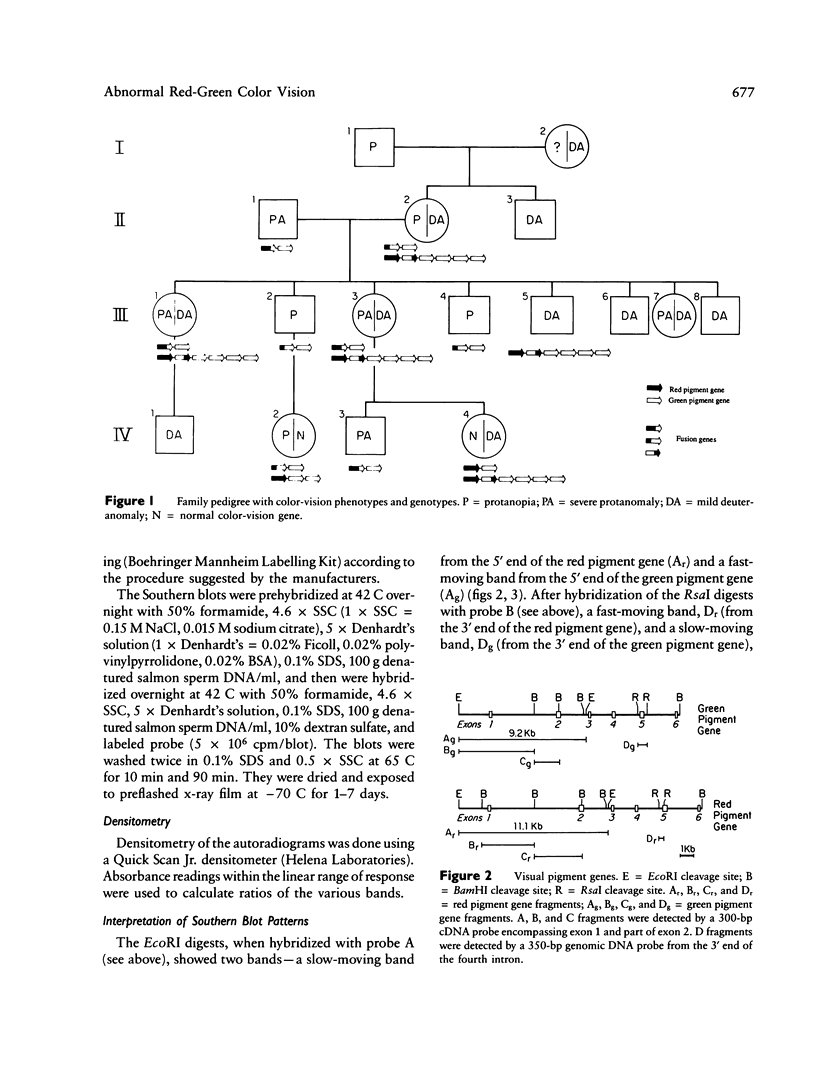
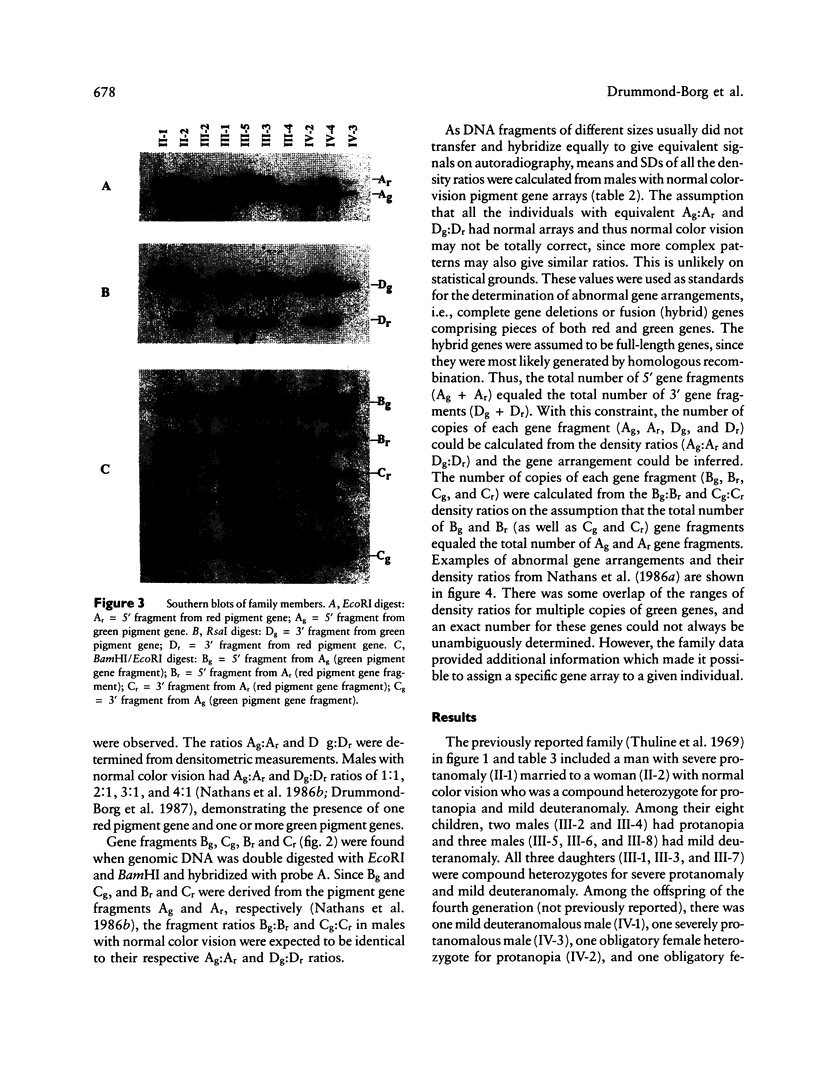
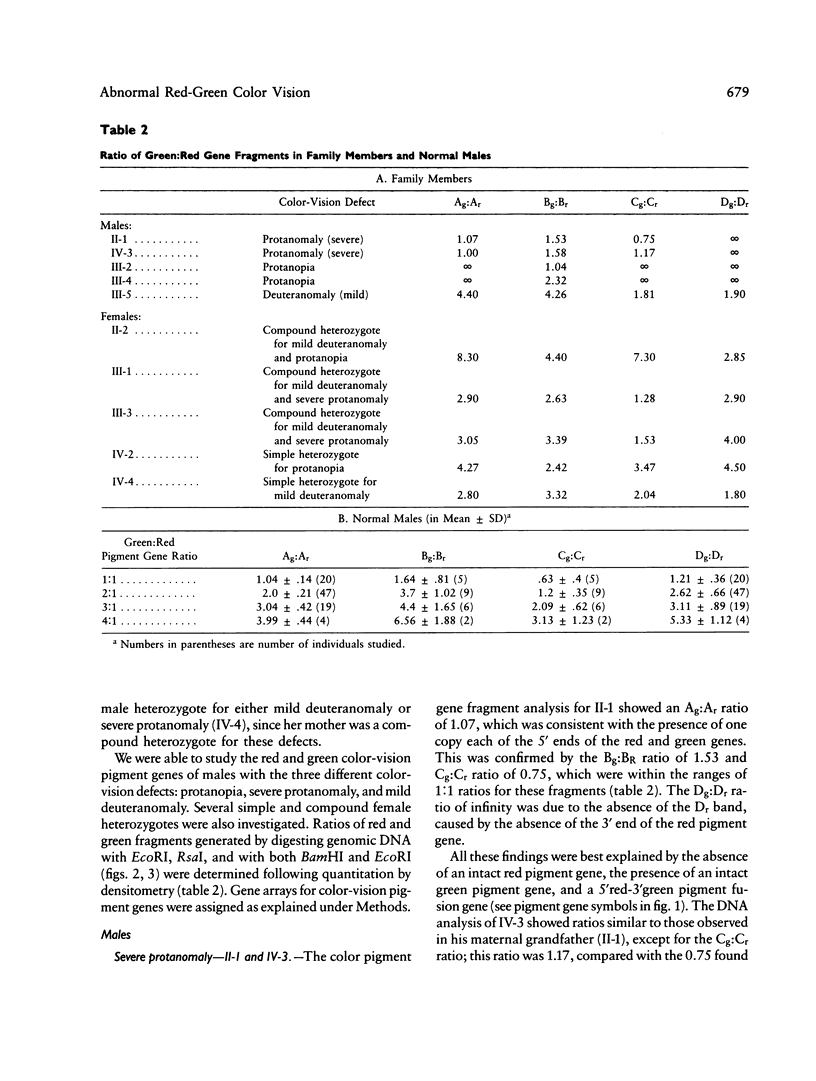
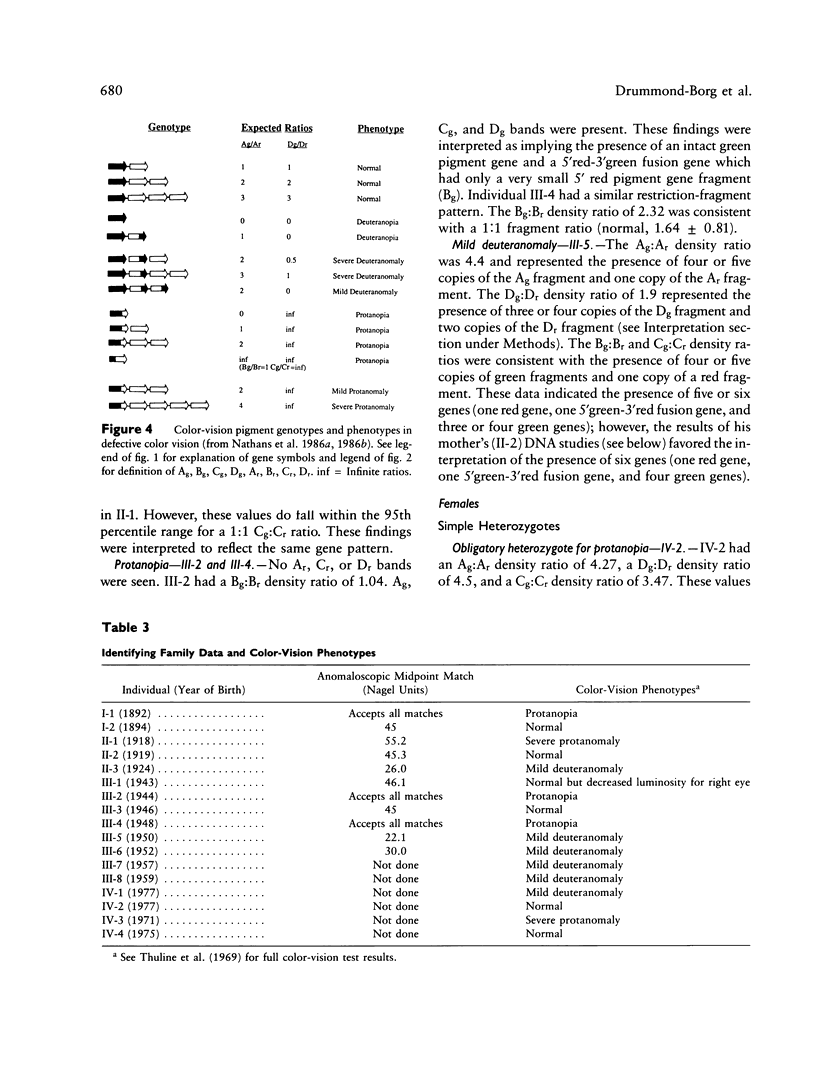
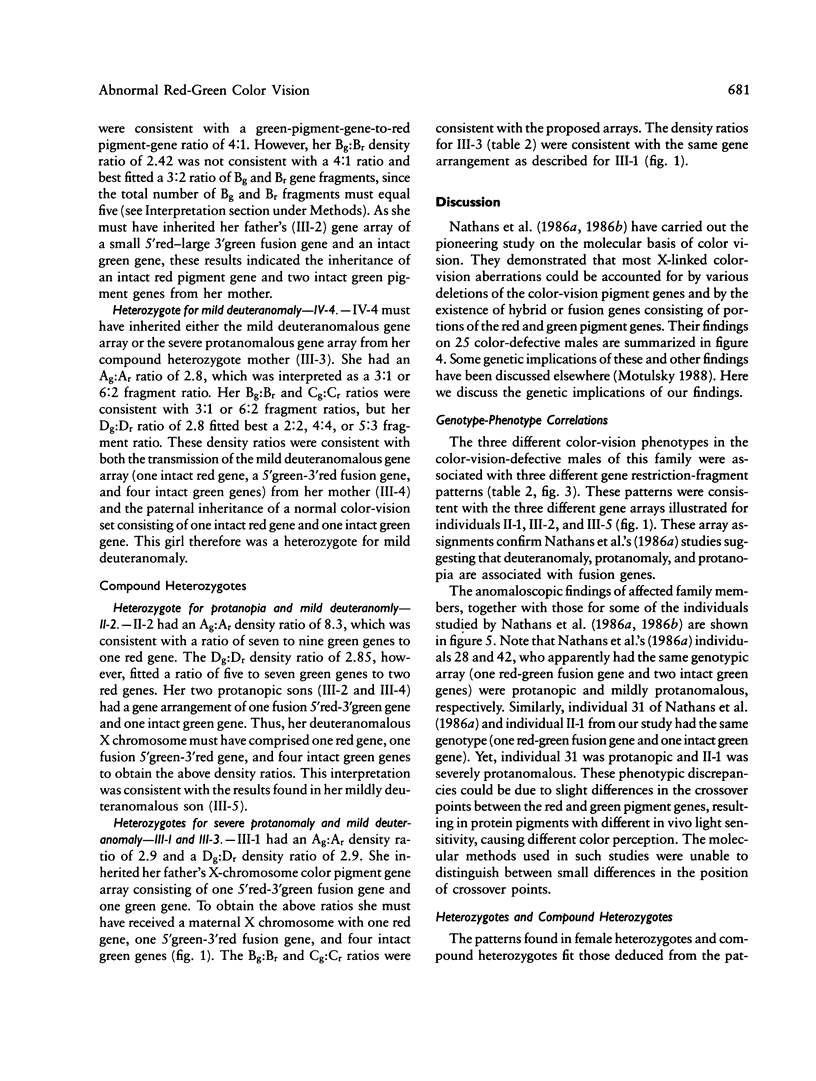
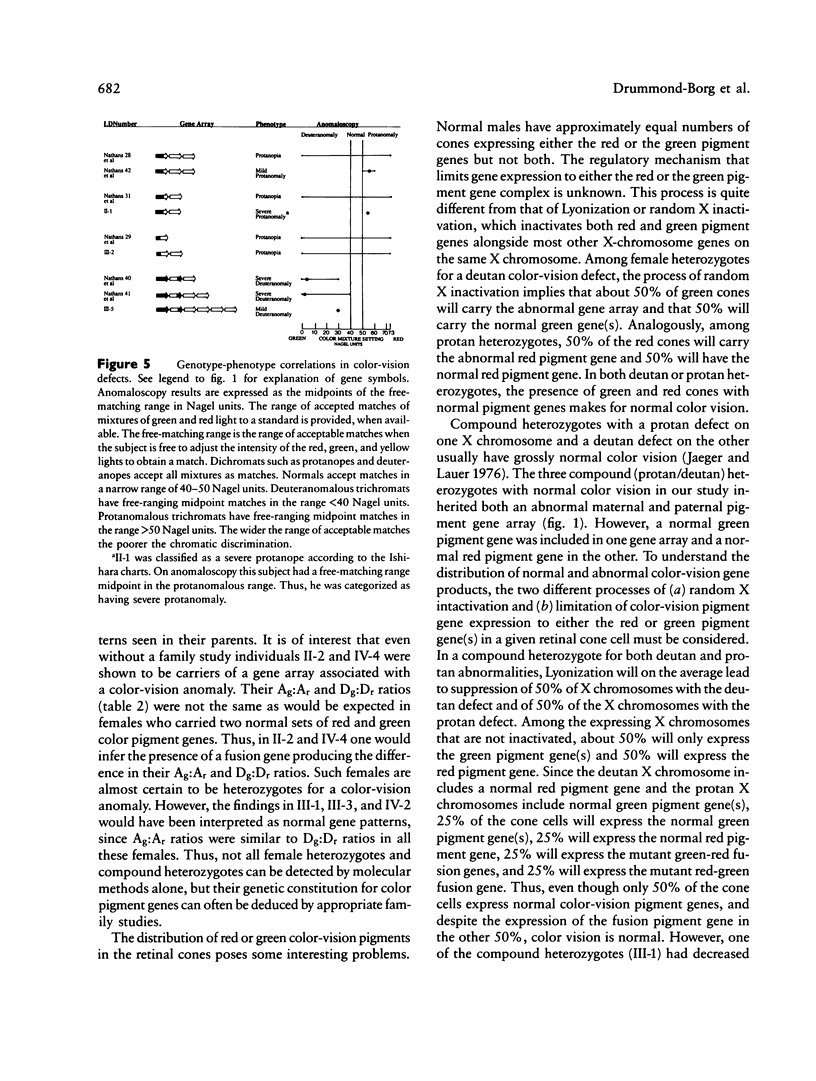
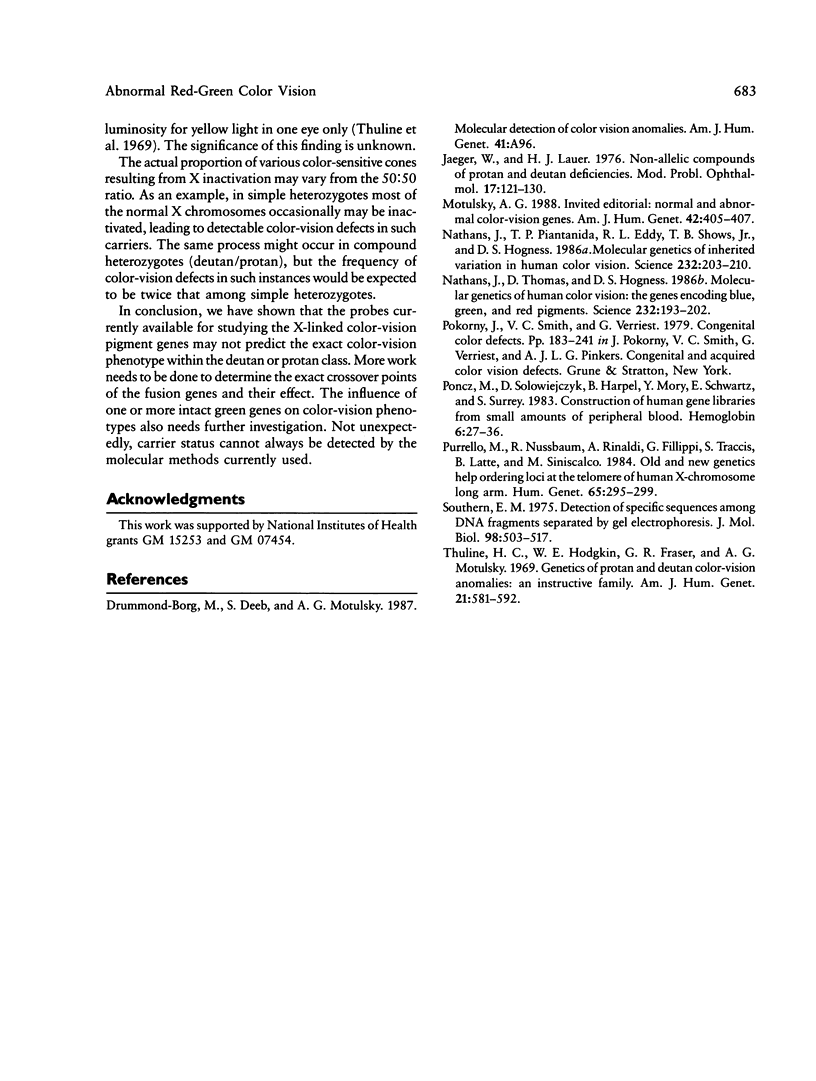
Images in this article
Selected References
These references are in PubMed. This may not be the complete list of references from this article.
- Jaeger W., Lauer H. J. Non-allelic compounds of protan and deutan deficiencies. Mod Probl Ophthalmol. 1976;17:121–130. [PubMed] [Google Scholar]
- Motulsky A. G. Normal and abnormal color-vision genes. Am J Hum Genet. 1988 Mar;42(3):405–407. [PMC free article] [PubMed] [Google Scholar]
- Nathans J., Piantanida T. P., Eddy R. L., Shows T. B., Hogness D. S. Molecular genetics of inherited variation in human color vision. Science. 1986 Apr 11;232(4747):203–210. doi: 10.1126/science.3485310. [DOI] [PubMed] [Google Scholar]
- Nathans J., Thomas D., Hogness D. S. Molecular genetics of human color vision: the genes encoding blue, green, and red pigments. Science. 1986 Apr 11;232(4747):193–202. doi: 10.1126/science.2937147. [DOI] [PubMed] [Google Scholar]
- Poncz M., Solowiejczyk D., Harpel B., Mory Y., Schwartz E., Surrey S. Construction of human gene libraries from small amounts of peripheral blood: analysis of beta-like globin genes. Hemoglobin. 1982;6(1):27–36. doi: 10.3109/03630268208996930. [DOI] [PubMed] [Google Scholar]
- Purrello M., Nussbaum R., Rinaldi A., Filippi G., Traccis S., Latte B., Siniscalco M. Old and new genetics help ordering loci at the telomere of the human X-chromosome long arm. Hum Genet. 1984;65(3):295–299. doi: 10.1007/BF00286521. [DOI] [PubMed] [Google Scholar]
- Southern E. M. Detection of specific sequences among DNA fragments separated by gel electrophoresis. J Mol Biol. 1975 Nov 5;98(3):503–517. doi: 10.1016/s0022-2836(75)80083-0. [DOI] [PubMed] [Google Scholar]
- Thuline H. C., Hodgkin W. E., Fraser G. R., Motulsky A. G. Genetics of protan and deutan color-vision anomalies: an instructive family. Am J Hum Genet. 1969 Nov;21(6):581–592. [PMC free article] [PubMed] [Google Scholar]



